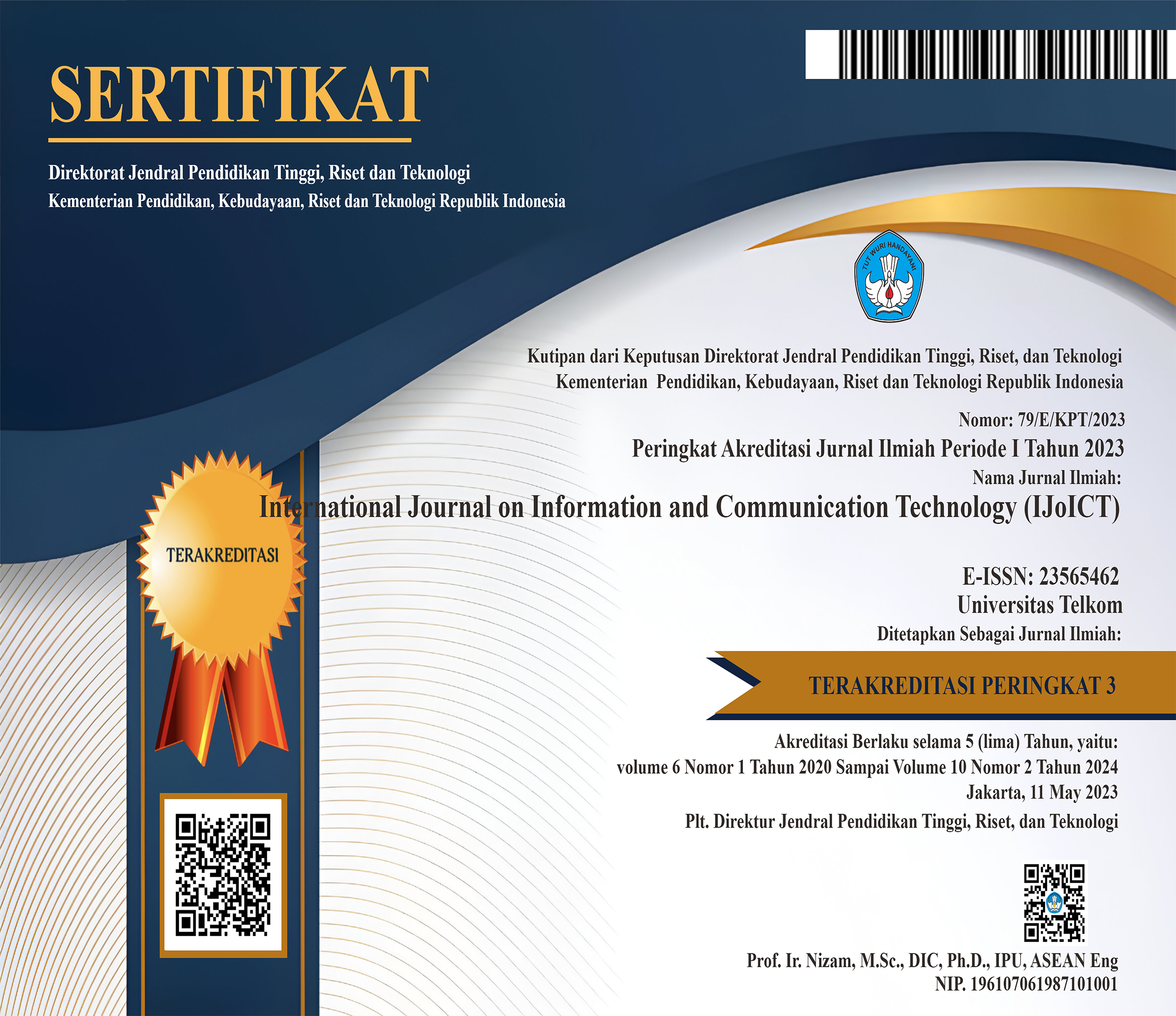Error Correction Codes Performance using Binary Phase Shift Keying over Fading Channel
 Abstract views: 198
,
Abstract views: 198
,
 pdf downloads: 237
pdf downloads: 237
Abstract
In a communication system, two main resources are used: transmission power and channel bandwidth. Transmission power is the average power of the transmitted signal. Channel bandwidth is defined as the frequency band allocated for the transmission of the message signal. A goal of general system design is to use these two resources as efficiently as possible. This scientific paper presents the experimental results of the Binary Phase Shift Keying (BSK) communication system on the additive white gaussian noise (AWGN) channel and the Fading channel. To improve system performance, error correction code (ECC) is used for encoding. ECC used include convolutional code (ConvCode) and Hamming code. Experimental results show that for BER=10^(-4) the coding gain of the ConvCode over Hamming code under AWGN is G=0.475dB. Whereas the coding gain of the ConvCode over unencoded BPSK is G=19.6dB.
Downloads
References
[2] H. Ye, L. Liang, GY Li, and BH Juang, “Deep Learning-Based End-to-End Wireless Communication Systems with Conditional GANs as Unknown Channels,â€IEEE Trans. wire. comm., 2020, doi:10.109/TWC.2020.2970707.
[3] N. Wu, X. Wang, B. Lin, and K. Zhang, “A CNN-Based End-to-End Learning Framework Toward Intelligent Communication Systems,â€IEEE Access, 2019, doi:10.1109/ACCESS.2019.2926843.
[4] S. Gao, W. Cao, L. Fan, and J. Liu, “MBSE for satellite communication system architecting,â€IEEE Access, 2019, doi:10.1109/ACCESS.2019.2952889.
[5] CS Pappu, TL Carroll, and BC Flores, “Simultaneous Radar-Communication Systems Using Controlled Chaos-Based Frequency Modulated Waveforms,â€IEEE Access, 2020, doi:10.109/ACCESS.2020.2979324.
[6] MHF Wen, KC Leung, VOK Li, X. He, and CCJ Kuo, “A survey on smart grid communication system,â€APSIPA Transactions on Signal and Information Processing. 2015, doi:10.1017/ATSIP.2015.9.
[7] KS Palacio-Baus and N. Devroye, “Achievable Error Exponents of One-Way and Two-Way AWGN Channels,â€IEEE Trans. inf. theory, 2021, doi:10.109/TIT.2021.3066855.
[8] Y. Yin, Y. Peng, M. Liu, J. Yang, and G. Gui, “Dynamic user grouping-based noma over rayleigh fading channels,â€IEEE Access, 2019, doi:10.1109/ACCESS.2019.2934111.
[9] AM Salhab and MH Samuh, “Accurate Performance Analysis of Reconfigurable Intelligent Surfaces over Rician Fading Channels,â€IEEE Wire. comm. Lett., 2021, doi:10.109/LWC.2021.3056758.
[10] Y. Wang, F. Liu, C. Wang, P. Wang, and Y. Ji, “Stochastic Geometric Analysis in Cooperative Vehicular Networks under Weibull Fading,â€IEEE Access, 2019, doi:10.109/ACCESS.2019.2950261.
[11] H. Ibrahim, H. Tabassum, and U. T Nguyen, “Exact Coverage Analysis of Intelligent Reflecting Surfaces with Nakagami-M Channels,â€IEEE Trans. veh. Technol., 2021, doi:10.109/TVT.2021.3050046.
[12] J. Huang, G. Xie, R. Kuang, F. Deng, and Y. Zhang, “QCA-based Hamming code circuit for nano communication network,â€Microprocess. Microsystem., 2021, doi:10.1016/j.micpro.2021.104237.
[13] T. Matsumine, T. Koike-Akino, and H. Ochiai, “A Low-Complexity Probabilistic Amplitude Shaping with Short Linear Block Codes,â€IEEE Trans. comm., 2021, doi:10.109/TCOMM.2021.3111032.
[14] L. Yu, Z. Lin, SJ Lin, YS Han, and N. Yu, “Fast Encoding Algorithms for Reed-Solomon Codes with between Four and Seven Parity Symbols,â€IEEE Trans. Comput., 2020, doi:10.109/TC.2019.2963827.
[15] S. Jiang, FCM Lau, and CW Sham, “Hardware design of concatenated zigzag hadamard encoder/decoder system with high throughput,â€IEEE Access, 2020, doi:10.109/ACCESS.2020.3022537.
[16] M. Teimouri, “Blind reconstruction of punctured convolutional codes,â€Phys. comm., 2021, doi:10.1016/j.phycom.2021.101297.

This work is licensed under a Creative Commons Attribution 4.0 International License.
Manuscript submitted to IJoICT has to be an original work of the author(s), contains no element of plagiarism, and has never been published or is not being considered for publication in other journals. Author(s) shall agree to assign all copyright of published article to IJoICT. Requests related to future re-use and re-publication of major or substantial parts of the article must be consulted with the editors of IJoICT.









.png)

.jpg)




